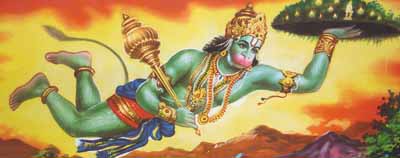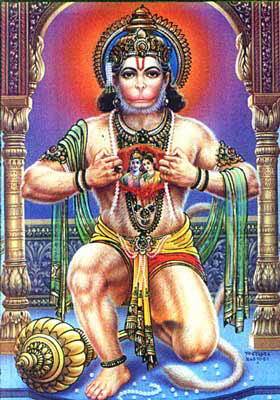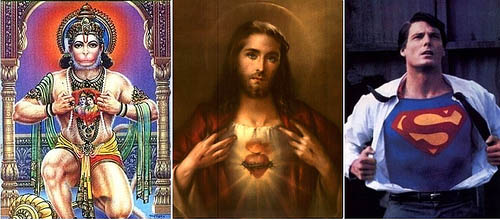The
"International Year Of Polytheism”
(powered by monochrom) wants to overcome the epoch of the monotheistic
worldviews (and its derivatives such as "The West"
and "The Arab World") through the reconstruction of
a polytheistic multiplicity in which countless gods and goddesses
will eventually neutralize each other. Polytheism is democracy,
Monotheism a dictatorship, even in its pseudo-secular form.
Freed from the servitude of monotheism and the fraternal strife
of the trinity, the world would be redeemed in a chaotic baptism
of multiplicity. Besides, we believe that polytheism is the
most suitable form of religion for a modern, dynamic and cosmopolitan
young culture. Improve your C.V. with polytheism. Create your
own heavens and hells. Or try it out yourself with our special
Gods/Goddesses trial subscription. Our qualified operators are
standing by to take your calls!
Fifth event:
Door Henge: Doors Of Polytheistic Perception:
Anonymous friends of the movement in San Francisco are erecting a polytheism monument on August 19, 2007 in an undisclosed public location. There is clearly a need for secrecy as a result of religious oppression from the monotheistic mainstream.
San Francisco, California.
Fourth event:
The Divining Pod
A balloon is a type of aircraft that remains aloft due to its buoyancy. A balloon travels by moving with the wind. The balloon is ONE BIG fabric envelope filled with a gas that is lighter than the surrounding atmosphere. A SINGLE balloon that is less dense than its surroundings, it rises, taking along with it a basket, attached underneath, that carries passengers or payload.
Cluster ballooning is an uncommon form of ballooning in which a balloonist is attached by a harness to a cluster of MANY SMALL rubber balloons.
Cluster ballooning is a perfect metaphor for the plurality and democracy of polytheism. Fight the concept of monotheistic single-balloon ballooning!
At Maker Faire San Francisco 2007 we want to present the world with the "Divining Pod".
Join our effort to fill ballons with helium, tag the balloons with names of air goddesses and air gods, and lift a human being into the skies of diversity! We want to see the heavens open!
San Francisco, California. Maker Faire @ San Mateo Fairgrounds. May 20, 2007.
Third event:
Eating A Persimmon For Zeus
A Persimmon is variety of species of trees of the genus Diospyros, and the edible fruit borne by them. The most widely cultivated species is Diospyros kaki. The fruit is very sweet to the taste with a soft to occasionally fibrous texture. Cultivation of the fruit started in parts of East Asia, and was later introduced to California.
Diospyros kaki translates as "The Fruit of Zeus".
Zeus, is (or was) the king of the gods, the ruler of Mount Olympus, and god of the sky and thunder, in Greek mythology. His symbols are (or were) the thunderbolt, bull, eagle and the oak. When the world was divided in three, Hades received the underworld, Poseidon the sea, and Zeus the sky.
We want to honor Zeus! We want to moan about the dreadful non-divisional monotheistic singularity! Long enough we were dominated by the concept of the God of the Abrahamic religions and/or the Platonic concept of God as put forward by Pseudo-Dionysius the Areopagite! We want to eat persimmons for Zeus! In anger!
Join the force! Eat his fruit! Get a certificate!
Los Angeles, California. Sidewalk @ 4810 Sunset Boulevard. February 23, 2007; 1 PM- 1:30 PM.
Second event:
Premature Burial As A Field Trial For Near Death Activities
The people present will have an opportunity to be buried alive
in a coffin for fifteen minutes. Volunteers will be able to
experience a semi-traumatic situation and possibly get in close
contact with various gods and/or afterlives.
As a framework program there will be lectures about the history
of the science of determining death and the medical cultural
history of "buried alive". People buried alive not only populate
the horror stories of past centuries, but also countless reports
in specialized medical literature. The theme of unintentional
resurrection by grave robbers also runs through forensic protocols.
Even in the 19th century it was said that every tenth person
was buried alive.
February 7, 2007. Blackwood
Gallery, Mississauga/University Toronto, Canada.
Grand Opening:
Free
Barium Nitrate!
The symbolic liberation of Barium Nitrate will signal the opening
of this "International Year of Polytheism". We would like to
invite you to join with us in igniting 10.000 bound sparklers,
free of any judaeo-christian intent. Nothing but a wonderfully
powerful fire signal, whose representational vacuity and lack
of otherwise traditional symbolic meaning might just wake some
of the ignoble gods exiled by monotheistic McKinseyism. We welcome
the gods back from their second-class beyond(s).
January 26, 2007. Symposion
Lindabrunn, Lindabrunn, Lower Austria.
Further
events are planned.
And never forget: One is the number of the beast!

|
|
|
| Favorite Deity #5: Hanuman, the Indian Superman |
Kixmi submitted a report about Hunuman, the Indian Superman. Thank you very much!
 Hanuman the monkey is not a top-level god, but an interesting one nonetheless, as some avatars of his have managed to sneak their way into so-called western culture, from christianity to pop-iconography and, eventually, to the Internet folklore.
Hanuman is a hero from the Ramayana epic (500-100 BCE). He loved god Rama (and his feminine partner Sita) so much that he was ready to sacrifice himself for their sake and to save the world from the menacing forces of evil.
Hanuman was born from a non-sexual sinless intercourse (immaculate conception being the catholic counterpart) between Shiva and a woman that had been transformed into a monkey by a curse. His mother Anjana and his pater-putativus Kesari, the giant monkey, lived in "chastity".
The other gods immediately acknowledged the divinity of the baby Hanuman and decided to make him immortal. This soon proved to be a big mistake.
Hanuman was not a well-behaved child. He used to tease holy men, and drink holy water. The gods eventually became rather
fed up with his behavior, and decided to punish him with amnesia. He lost the knowledge of his superpowers, and only remembered them when mentioned by somebody other than him.
It was these very powers that would decide the Ramayana War. Hanuman's tail burnt the entire island of Sri Lanka, and gave victory to the army of god Rama over the forces of devil Ramana.
Hanuman loves every human being. He is a mediator between humans and Rama (like egyptian monkey-god Thot, or Jesus Christ). He sits next to Rama in the kingdom of heaven.
Many Indian holy men claim to have seen Hanuman in recent times. His image is used today against Indian religious minorities by the Bajrang Dal, a far-right hindu paramilitary youth organisation also known as Monkey God's Army. Here is an interesting question for discussion via the International Year of Polytheism: Can gods in a polytheistic context also be used for sectarian bigotry?
In any case, it is the image that makes Hanuman so interesting.  To give proof of his love, Hanuman tears open his chest with his own hands to show his heart, in which the images of Rama and Sita can be seen.  From that image, it is possible to draw a genealogy of chest-opening gods or half-gods. Take for instance the "sacred heart of Jesus", worshipped from the XIth century on, and widely reproduced in catholic and anglican iconography. In the XXth century this image was (consciously or subconsciously) secularized by the creators of the cartoon-character Superman. Superman opens his shirt to reveal a heart-shaped logo under which he is ready to save the world.
The hearts of Hanuman, Christ and Superman are possibly - sublimated representations of ancient human practices of sacrifice, in which the chests of propiciatory victims were sliced open and their hearts extracted in order to be burnt or eaten.
This is a powerful image, a gestalt, an archetype, an iconic virus installed in the human collective subconsciousness since prehistoric ages. Today we could call it a strange attractor. I call it just Kixmi. Additional link
|
|

